THE HISTORY OF HICKOK, Inc.
Founding of the Company
The year is 1910. William Taft is President, the Philadelphia
Athletes win the World Series, Halley’s Comet lights the sky, and a watchmaker began the Hickok Electrical
Instrument Company in a small building behind his home in Atlanta, Georgia.
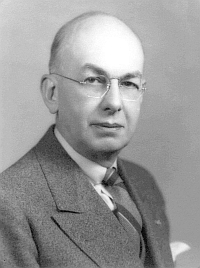 With one employee, and less than a thousand dollars in capital, Robert D. Hickok
embarked on a long and successful journey designing and manufacturing electrical measuring instruments. With one employee, and less than a thousand dollars in capital, Robert D. Hickok
embarked on a long and successful journey designing and manufacturing electrical measuring instruments.
The Move to Cleveland
By the spring of 1913, Mr. Hickok realized the need to be closer to an
industrial center and his customers, so he moved the company to Cleveland, Ohio. One year later, one of the
company’s largest customers offered to sell its building for $15,000 dollars and take $10,000 of the price out in
meters. Mr. Hickok accepted deal, and in June of that year moved to the present plant. The business continued to
grow and the company was organized in 1915 as an Ohio corporation. However, it did not offer its securities to the
public until 1959.
During World War I, Hickok manufactured indicating instruments of larger panel and switchboard types. Most of
the instruments manufactured during this time were used on submarine destroyers. Many of the portable instruments
made for the Navy during this time were still in use many years after the War had ended.
|
ETI WANTS YOUR
ARTICLES FOR THE ETI INDUSTRY MEMBER PROFILE!
ETI invites all of its members to submit articles on their company,
products and services for inclusion in our ETI Industry Update. We will include as many articles as
possible in each edition of the ETI Industry Update.
This is your opportunity to highlight who you are and what you do,
and get some free PR in the process. Newsletters have great potential to promote your
business, sell your products, inform your potential customers, and retain existing customers. They
can increase affiliate sales, market new products, or keep your customers informed of
changes. Don’t miss out on an easy opportunity to promote your business. It's a practice that
has a double impact on your bottom line - by decreasing expenses and increasing profits.
Please make sure you read and follow the article submission
guidelines. Please email your articles to Jessie at jessiek@etools.org .
ETI MEMBER COMPANY PROFILE ARTICLE SUBMISSION GUIDELINES
The article must be in MS Word.
The article can be an original piece you or someone at
your company wrote. It is the responsibility of the author to obtain permission for the
use of any copyrighted material, including images.
The purpose of the profile is to introduce your company,
products, and services to potential customers, partners, and other companies that may be
interested. Make sure the article is informative and covers the following
elements:
- The history of your company. When was it founded,
how long has your company been in business.
Headquarter
location and other major branch locations.
- What is the mission and has that changed.
- Has the company expanded? Have there been any
mergers or acquisitions?
- Has your company received any special certifications,
awards and/or recognition?
- What unique about your company and its
products?
- In general terms, what are your company’s plans for the
future?
- The article should not contain video or
sound.
- In order to maintain our format, we reserve the right
to edit articles and images for spelling, grammar and size.
|
New Emerging Technology—Radio
The years immediately following World War I saw the
development of a new technology—Radio. Early on, Mr. Hickok realized the market’s need for well designed and
manufactured commercialtube testers. It is believed the company developed the first ever radio tube tester.
 The Hickok Electrical Instrument Company had a reputation among the
servicemen for providing a high quality line of commercial radio testers, and despite the depression years,
tube tester sales continued to increase. Hickok continued to lead the field by producing a variety of
testers, scopes and meters to meet the demands of a developing technology. The Hickok Electrical Instrument Company had a reputation among the
servicemen for providing a high quality line of commercial radio testers, and despite the depression years,
tube tester sales continued to increase. Hickok continued to lead the field by producing a variety of
testers, scopes and meters to meet the demands of a developing technology.
Expanding into Aircraft Instrumentation
 In 1936, the company applied its skill in engineering and producing precision test
equipment to the development of several types of electrical aircraft instruments. The first instrument, a
resistance thermometer, with improvements became the A.N. (Army/Navy) Universal type, allowing Hickok to
become one of the first quantity suppliers of these meters to the United States Air Force. In 1936, the company applied its skill in engineering and producing precision test
equipment to the development of several types of electrical aircraft instruments. The first instrument, a
resistance thermometer, with improvements became the A.N. (Army/Navy) Universal type, allowing Hickok to
become one of the first quantity suppliers of these meters to the United States Air Force.
World War II
By the time the United States entered World War II, Hickok was firmly
established as a leader in their field. Having been long familiar with Hickok testers in their civilian
occupations, technical engineering personnel in the electronic and communication divisions of the Armed Services
readily recognized the practical usefulness and dependability of Hickok equipment.
By the 1950’s, under government contract, Hickok had perfected and manufactured approximately fifty different,
highly specialized electronic testers.
Post War Growth
After World War II, Hickok kept its eye on the ever-changing technologies in
the electronic world. Televisions and Hi-Fi’s were becoming more commonplace in the home and Hickok created the
test equipment needed to service them.
Hickok also continued to develop and manufacture precision indicators and meters for aircraft, locomotive, and
industrial applications. Their tube testers, voltmeters and other measuring devices were still in high demand by
the military.
In 1956, Hickok purchased Supreme Instruments Corporation. Located in Greenwood, Mississippi, the division
continues to manufacture the majority of Hickok’s products today.
Increasing Diversification
By the mid 1960’s, Hickok was active in six distinct market areas:
Commercial Test Equipment—this included oscilloscopes, color bar generators, tube testers, field strength meters,
transistor testers and FM stereo generators.
Laboratory and Industrial Test Equipment—this consisted of more sophisticated, sensitive test instruments for
use in the research and development laboratories of industry and colleges.
Meters and Electrical Indicating Instruments—an area in which Hickok has a long established reputation for
excellence. The company was the leader in the development of the taunt-band movement that eliminated pivots, jewels
or hairsprings. Principal customers were original equipment manufacturers.
Systems Control Equipment—the Cardmatic Card Reader, a proprietary product, was a direct-circuit programming
activator using a tape feed or vinyl punch cards, It was adaptable to any type of programming, automatic
inspection, computer or production control job.
Government Contracts—over the years, Hickok became an important supplier for meters and test equipment to the
Department of Defense. The company’s meters have been used in some cases for ground support of the nation’s space
programs.
Teaching Systems—the newest product at the time, Hickok became well known for providing training equipment and
instructional aids for use in colleges, high schools, and technical schools. Programs were designed to provide
practical training in electronics technology, including computer repair and operation.
The 1970’s saw a shift from developing for the servicing market to focusing on measurement instrumentation for
engineers and designers. This included developing the first digital measurement system that sold on the market for
under $500.
A new aspect was added to the educational division with the acquisition of two schools, the Massachusetts Radio
and Electronic School in Boston and the Hickok Technical Institute in Cleveland. Both schools specialized in the
vocational teaching of electronics.
Entering the Automotive Market
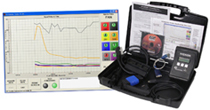 During the 1980’s, the automotive market increased its use of
microprocessor-based technology to monitor engine functions, emissions, and fuel usage. Once again, Hickok
recognized a need and began concentrating on designing and marketing instruments used to diagnose automotive
electronic systems. During the 1980’s, the automotive market increased its use of
microprocessor-based technology to monitor engine functions, emissions, and fuel usage. Once again, Hickok
recognized a need and began concentrating on designing and marketing instruments used to diagnose automotive
electronic systems.
By 1995, electrical instruments comprised only a small part of the company’s products, so to avoid conveying an
inaccurate image of the company and its capabilities, the name was changed to Hickok Incorporated.
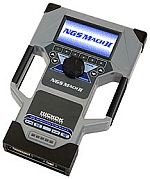 The company began by developing specialized test equipment for OEM’s,
particularly the Ford Motor Company. The New Generation Star (NGS) tester, a factory level scan tool designed
for the Ford Motor Company, became a favorite tool of choice by technicians around the world. The company began by developing specialized test equipment for OEM’s,
particularly the Ford Motor Company. The New Generation Star (NGS) tester, a factory level scan tool designed
for the Ford Motor Company, became a favorite tool of choice by technicians around the world.
Recognizing that much of the technology developed for the automotive OEMs could have application to the
automotive
aftermarket, Hickok acquired Waekon Industries in 1998. The company embarked on development programs to design
tools specifically tailored to the needs of the automotive aftermarket, and develop a variety of sales channels to
the market.
Since the late 1990’s, products designed specifically to OEM requirements have been balanced with products
developed for automotive aftermarket servicers and the emissions testing industry.
Automotive Emissions Testing
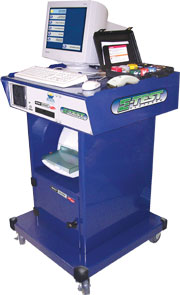 In 2000, Hickok took their automotive expertise and developed a reputation for
providing quality emission testing products beginning with the patented Fuel Cap Tester that has been used in
numerous state programs by emissions testing equipment suppliers. In 2000, Hickok took their automotive expertise and developed a reputation for
providing quality emission testing products beginning with the patented Fuel Cap Tester that has been used in
numerous state programs by emissions testing equipment suppliers.
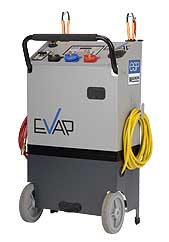 From 2002 until 2007, Hickok worked with the State of California to develop a
patented product for testing leaks in vehicle evaporative emissions systems and began shipping the product in
August 2007. From 2002 until 2007, Hickok worked with the State of California to develop a
patented product for testing leaks in vehicle evaporative emissions systems and began shipping the product in
August 2007.
In 2004, the Company developed and marketed a complete emissions testing platform for a State of Pennsylvania
program.
Fuel Injection Diagnostic Technology
In addition to developing emission testing products in
the early 2000’s, Hickok became a leader in the field of fuel injection diagnostic technology. Developing equipment
for both gasoline and diesel engines, Hickok provides the primary fuel injection diagnostic tool for several
automotive OEMs, including General Motors and Navistar International.
Indicators and Gauges
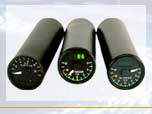 Hickok continues to provide quality indicators and gauges for the aircraft
and locomotive industry. Within the aircraft market, instruments are sold primarily to manufacturers or
servicers of business, military, and pleasure aircraft. Within the locomotive market, indicators are sold to
both original equipment manufacturers and to operators of railroad equipment. Hickok continues to provide quality indicators and gauges for the aircraft
and locomotive industry. Within the aircraft market, instruments are sold primarily to manufacturers or
servicers of business, military, and pleasure aircraft. Within the locomotive market, indicators are sold to
both original equipment manufacturers and to operators of railroad equipment.
An original grouping of products, DIGILOG Instruments, were certified with the FAA during 2002. Subsequently,
several additional models have also been certified. The DIGILOG instrument is a customizable indicator that is a
combination analog/digital indicator for the aircraft market. It can be adapted to display a wide variety of
aircraft parameters.
Looking to the Future
As new technologies emerge, the company actively researches these
areas to determine how they can develop tools to aid in the diagnosis and service. Hickok is fully committed to
providing innovative, quality American designed and manufactured diagnostic equipment for years to come.
©2010 Hickok Inc. All rights reserved.
Hickok Inc.
10514 Dupont Ave.
Cleveland, OH 44108-1399
Phone: 216/541-8060
Toll Free: 800/342-5080
Fax: 216/761-9879 |
Hickok Manufacturing Group
1714 Carrolton Ave.
Greenwood, MS 38930-5818
Mailing Box: P. O. Box 552
Greenwood, MS 38935-0552
Phone: 601/453-6212
Fax: 601/455-2446 |
| 

 With one employee, and less than a thousand dollars in capital, Robert D. Hickok
embarked on a long and successful journey designing and manufacturing electrical measuring instruments.
With one employee, and less than a thousand dollars in capital, Robert D. Hickok
embarked on a long and successful journey designing and manufacturing electrical measuring instruments. The Hickok Electrical Instrument Company had a reputation among the
servicemen for providing a high quality line of commercial radio testers, and despite the depression years,
tube tester sales continued to increase. Hickok continued to lead the field by producing a variety of
testers, scopes and meters to meet the demands of a developing technology.
The Hickok Electrical Instrument Company had a reputation among the
servicemen for providing a high quality line of commercial radio testers, and despite the depression years,
tube tester sales continued to increase. Hickok continued to lead the field by producing a variety of
testers, scopes and meters to meet the demands of a developing technology. In 1936, the company applied its skill in engineering and producing precision test
equipment to the development of several types of electrical aircraft instruments. The first instrument, a
resistance thermometer, with improvements became the A.N. (Army/Navy) Universal type, allowing Hickok to
become one of the first quantity suppliers of these meters to the United States Air Force.
In 1936, the company applied its skill in engineering and producing precision test
equipment to the development of several types of electrical aircraft instruments. The first instrument, a
resistance thermometer, with improvements became the A.N. (Army/Navy) Universal type, allowing Hickok to
become one of the first quantity suppliers of these meters to the United States Air Force. During the 1980’s, the automotive market increased its use of
microprocessor-based technology to monitor engine functions, emissions, and fuel usage. Once again, Hickok
recognized a need and began concentrating on designing and marketing instruments used to diagnose automotive
electronic systems.
During the 1980’s, the automotive market increased its use of
microprocessor-based technology to monitor engine functions, emissions, and fuel usage. Once again, Hickok
recognized a need and began concentrating on designing and marketing instruments used to diagnose automotive
electronic systems. The company began by developing specialized test equipment for OEM’s,
particularly the Ford Motor Company. The New Generation Star (NGS) tester, a factory level scan tool designed
for the Ford Motor Company, became a favorite tool of choice by technicians around the world.
The company began by developing specialized test equipment for OEM’s,
particularly the Ford Motor Company. The New Generation Star (NGS) tester, a factory level scan tool designed
for the Ford Motor Company, became a favorite tool of choice by technicians around the world. In 2000, Hickok took their automotive expertise and developed a reputation for
providing quality emission testing products beginning with the patented Fuel Cap Tester that has been used in
numerous state programs by emissions testing equipment suppliers.
In 2000, Hickok took their automotive expertise and developed a reputation for
providing quality emission testing products beginning with the patented Fuel Cap Tester that has been used in
numerous state programs by emissions testing equipment suppliers. From 2002 until 2007, Hickok worked with the State of California to develop a
patented product for testing leaks in vehicle evaporative emissions systems and began shipping the product in
August 2007.
From 2002 until 2007, Hickok worked with the State of California to develop a
patented product for testing leaks in vehicle evaporative emissions systems and began shipping the product in
August 2007. Hickok continues to provide quality indicators and gauges for the aircraft
and locomotive industry. Within the aircraft market, instruments are sold primarily to manufacturers or
servicers of business, military, and pleasure aircraft. Within the locomotive market, indicators are sold to
both original equipment manufacturers and to operators of railroad equipment.
Hickok continues to provide quality indicators and gauges for the aircraft
and locomotive industry. Within the aircraft market, instruments are sold primarily to manufacturers or
servicers of business, military, and pleasure aircraft. Within the locomotive market, indicators are sold to
both original equipment manufacturers and to operators of railroad equipment.
